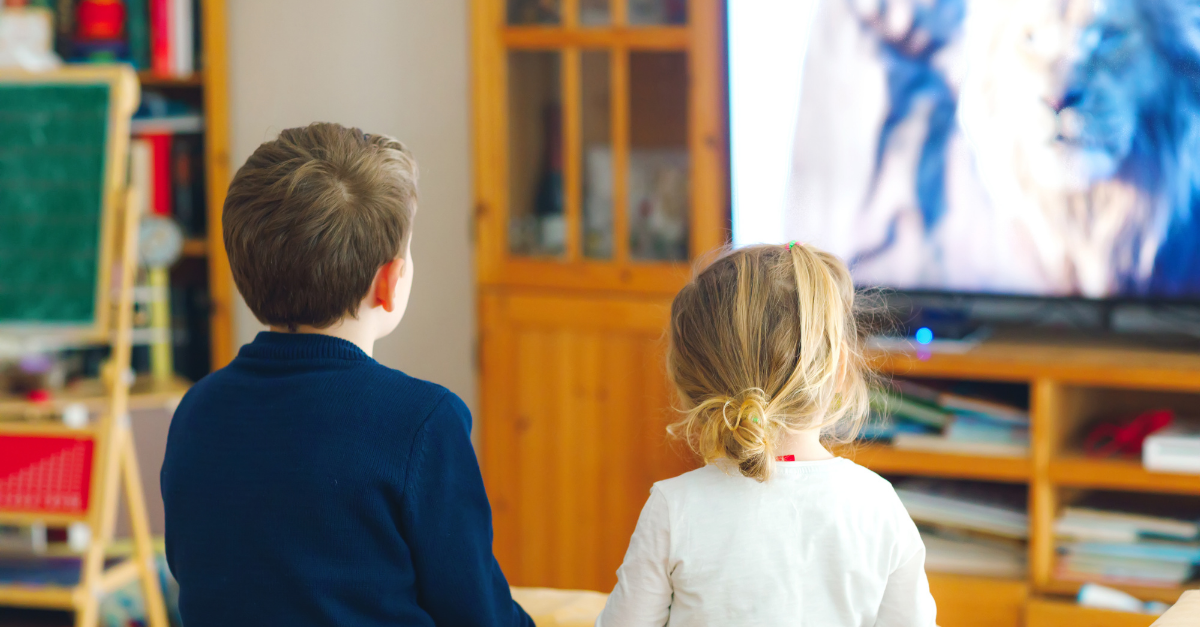Children, screens and parents: finding the right balance
For many, letting a child play a smartphone game or watch a video is a way to ensure calm. But for many parents, leaving a child in front of a screen also creates many concerns. However, by following the best practices we will explore here, you can let your child enjoy digital content in complete safety.
A situation that mixes anxiety and guilt
When we talk about children and screens, the first thing that seems to come to mind for parents is worry.
The first concern is that their child will spend all their free time in front of a screen, whether it is a smartphone, a television, or something else. 90% of parents say they are worried about their children being addicted to screens and the consequences that too much time spent in front of screens could have on their development. If the conclusions drawn on the effects of screens on children are sometimes contradictory, they worry parents who rightly want to protect their child from it. So how long can we let children watch their series or play on a game console without taking risks? Finding the right balance is essential when we know that today’s screens have as much recreational as educational value.
Putting a child in front of a screen seems to be a path filled with pitfalls for parents who might prefer to keep them away from it as much as possible… except that 72% of parents consider that screens make it easy to keep children occupied! During the first lockdown in 2020, when many workers were teleworking and schools were closed, 6-12 year olds spent an average of 7 hours a day in front of a screen. In times of need for quiet or when parents are overwhelmed, screens are often seen as a way to canalize children. Even if parents are aware of the risks that screens can represent, 83% of them think that it is important for their child to live in the age of time, which means in a digitalized world, surrounded by screens and first of all those of their family! Very early, children are exposed to their parents’ screens, and they see them spending hours in front of them: in March 2021, the French spent an average of 2h30 of their free time per day on the Internet. Parents would therefore be addicted to screens, even though they want to prevent their children from being addicted. They can then feel a certain guilt, especially since children learn by mimicry. By the age of 3, a majority of children are able to identify the main buttons on a video player. Some may have already had a smartphone or a tablet in their hands, but in most cases, they learn by watching older children do it.
Moderate, educational, and interactive screen time for children
Parents need to find the right balance to protect their children while helping them to grow. The 3-6-9-12 rules are designed to help parents establish healthy habits to ensure that screen time goes hand in hand with development. These rules are adapted to the age of the child: no screens before 3 years old, then screen time and progressive autonomy. It is important for adults to be at the side of children to ensure a balance between entertainment and education during this screen time.
While the amount of time kids spend in front of screens is an important issue, what they spend that time in front of is an equally important issue. While children may be exposed to age-inappropriate content, screens also offer them quality educational content. Of the 7 hours spent in front of a screen each day during the first lockdown of 2020, children spent 3 hours on educational and informative content. In France, the “Nation Apprenante” operation has seized the opportunity that screens represent for children’s learning and educational continuity. The Lumni platform was part of this operation. It offers content adapted according to the age and curriculum of the child, creating a safe space for him as long as he remains in the content made for his class. Launched in November 2019, 1.8 million monthly visitors trust the platform’s content.
Lumni offers both video content and interactive content such as educational mini-games. This is an essential point to understand why parents and teachers turn to this platform. It is the interactivity that makes screen time, when it remains reasonable, beneficial for kids. The content itself can be interactive, but interactivity can also come from the intervention of adults who take care of the children. It is then a question of extending the digital moment by exchanging, by asking questions about what they have just seen and by making the link with their real world.

Math Matthew to learn math in a fun way. An episode for third graders available on Lumni.
For parents, managing their kids’ relationship with screens is a daily task, but good technological practices and tools specially designed to help parents exist and allow them to reassure themselves about the use of digital technology for their children.
Platforms for children, but also for parents
There is a certain duty on the part of platforms and content providers to ensure the safety of young people. By creating platforms or spaces specially designed for children, parents are partly relieved of their duty of vigilance. The content is chosen for its relevance to children, taking into account age differences. In the case of a generalist media offering a children’s section, it is a matter of isolating the relevant content from the whole catalog to create a children’s area where the other content will not be accessible. The TF1 group combines these two approaches with the TFOU Max platform, which brings together the youth programs of its channels. Creating a closed and secure space is the first essential step to bring more serenity to parents and more good times to children. This space can then be used to complement the screens and be deployed on the various media accessible to children to form a global ecosystem ranging from television to mobile applications and be accessible at any time according to the preferences of parents and children.
Creating a safe, enclosed space is the first essential step in providing more peace of mind for parents and more good times for children.
After content, the second main concern is screen time. An important feature in children’s areas and platforms is the ability to set a maximum viewing time per day. While not all platforms have it in place, it does make it easy to accurately control the amount of time kids spend on a platform or ecosystem, even if they switch from TV to tablet while watching. But this feature should not be accessible to children who could increase this limit as they wish. Therefore, platforms and ecosystems for children must also have secure spaces for parents where they can adjust the experience their children will have. The securing can be through a PIN code or a question that children are not able to answer. With this space, it is about limiting the time, but also filtering the content to leave available only the most relevant content for the age category of the children or preventing them to make purchases on the platform as an extension of subscription. It is with these concerns in mind that Riplee is building the TFOU Max ecosystem, the leader in France for children’s SVOD.

For TFOU Max, Riplee designed a secure ecosystem for children with a parents’ area to control the children’s user experience.
The goal is to let kids spend part of the time in autonomy on the platform by establishing a logic of collaboration between the parents and the platform. A platform for children should not be made exclusively for children, but always for children and parents. The collaboration between parents and platform starts with the child’s security, which is fundamental to establish a relationship of trust, but it can go further. We can provide parents with summaries and suggestions for discussions or activities based on what their children are watching, with figures on their viewing habits, etc. This information will help parents and children make screen time as fulfilling and rewarding as possible.
A platform for kids should not be made exclusively for them but always for kids and parents.
Of course, to be meaningful, children’s platforms must be designed to take into account the preferences and psychomotor abilities of the child according to his age. A 4 year old is different from a 7 year old: the size of the icons, the texts and the range of possibilities must be adjusted to the capacities of each age in order not to create frustrations. The Okoo mobile application that gathers France Television’s youth programs illustrates this evolution. Children of 7 years old have access to a finer categorization and smaller icons than those of 3 years old. The ecosystem created must be as playful and enriching as it is safe.

Overview of the Okoo homepage for 3 year olds and 7 year olds. The contents put forward as well as the interface evolve according to the age.
Children's platforms should be designed to take into account the preferences and psychomotor abilities of the child according to his age.
The importance of children’s digital experience for their learning process
It is possible to integrate screens into children’s lives in a healthy way because the problems come not so much from the screens themselves as from overexposure and poorly supervised experiences. There is a wealth of content for children that deserves to be exploited to help them grow, have fun and learn. Adults obviously have a major role to play in accompanying children. Platforms, which sometimes constitute ecosystems, dedicated to the youngest and thought for them are necessary to leave them in confidence in front of the television or on the tablet. To gain the trust of parents while entertaining children, they must implement features that establish a collaborative logic with parents.


